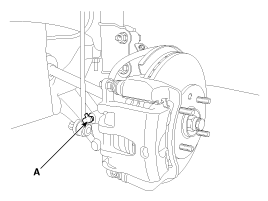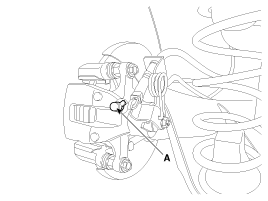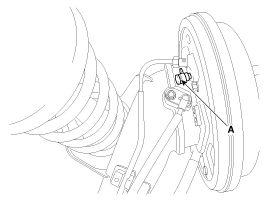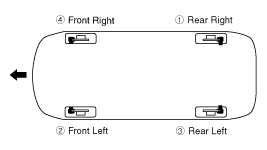 Hyundai Accent: Description and Operation
Hyundai Accent: Description and Operation
Hyundai Accent RB (2010-2018) Service Manual / Brake System / Brake System / Description and Operation
Operation and Leakage Check
| Check all of the following items: |
|
Component |
Procedure |
||||
|
Brake Booster (A) |
Check brake operation by applying the brakes during a test drive.
If the brakes do not work properly, check the brake booster. Replace the
brake booster as an assembly if it does not work properly or if there are
signs of leakage. |
||||
|
Piston cup and pressure cup inspection (B) |
|
||||
|
Brake hoses (C) |
Look for damage or signs of fluid leakage. Replace the brake hose
with a new one if it is damaged or leaking. |
||||
|
Caliper piston seal and piston boots (D) |
Check brake operation by applying the brakes. Look for damage or signs of fluid leakage. If the pedal does not work properly, the brakes drag, or there is damage or signs of fluid leakage, disassemble and inspect the brake caliper. Replace the boots and seals with new ones whenever the brake caliper is disassembled. |
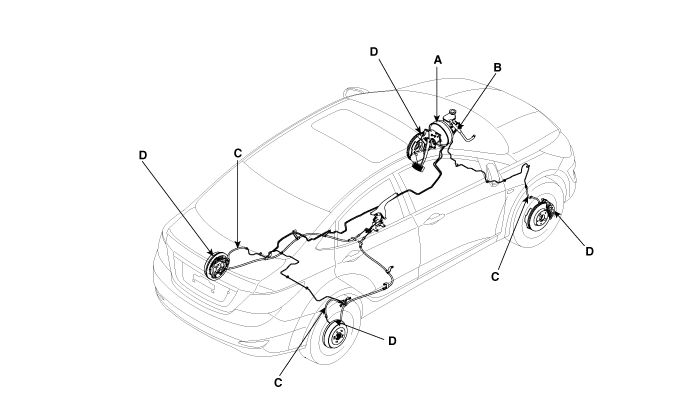
| Brake System Bleeding |
|
| 1. |
Make sure the brake fluid in the reservoir is at the MAX(upper)
level line.
|
| 2. |
Have someone slowly pump the brake pedal several times, and then
apply pressure.
|
| 3. |
Loosen the right-rear brake bleed screw (A) to allow air to escape
from the system. Then tighten the bleed screw securely.
[Front disc brake]
[Rear disc brake]
[Rear drum brake]
|
| 4. |
Repeat the procedure for wheel in the sequence shown below until
air bubbles no longer appear in the fluid.
|
| 5. |
Refill the master cylinder reservoir to MAX(upper) level line.
|
 Brake System
Brake System
...
 Brake Booster. Components and Components Location
Brake Booster. Components and Components Location
Components
1. Brake booster
2. Master cylinder assembly
3. O-ring
...
See also:
Check battery and cables
Winter puts additional burdens on the battery system. Visually inspect the battery
and cables as described in section 7. The level of charge in your battery can be
checked by an authorized HYUNDAI ...
Removal
1.
Turn the ignition switch OFF and disconnect the battery
negative (-) cable.
2.
Remove the intake manifold (Refer to “Intake And
E ...
Recommended lubricants and capacities
To help achieve proper engine and powertrain performance and durability, use
only lubricants of the proper quality. The correct lubricants also help promote
engine efficiency that results in impro ...
Hyundai Accent Manuals
© 2011-2025 Copyright www.hamanual.com

